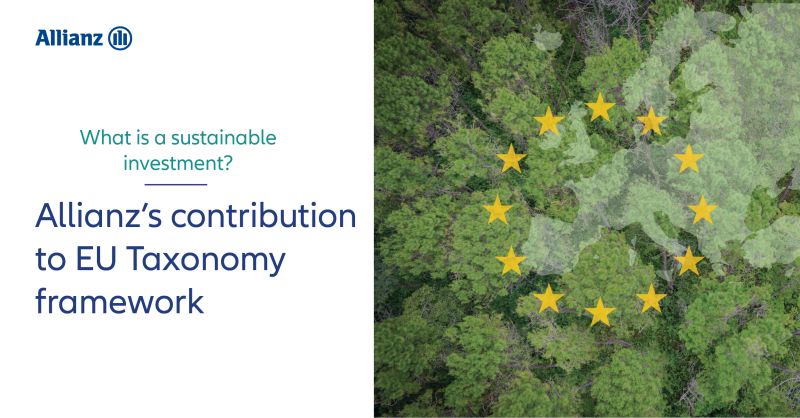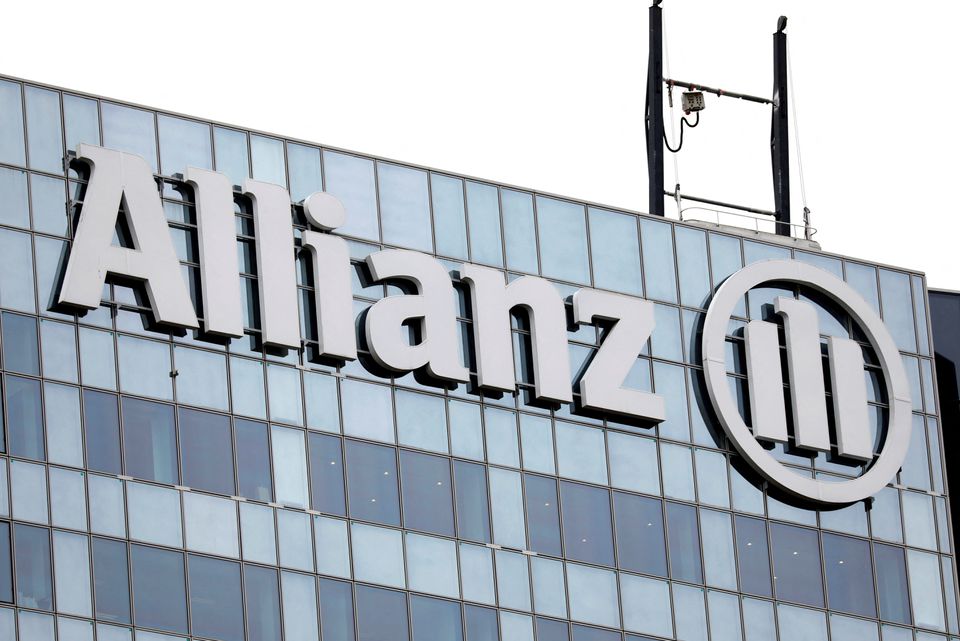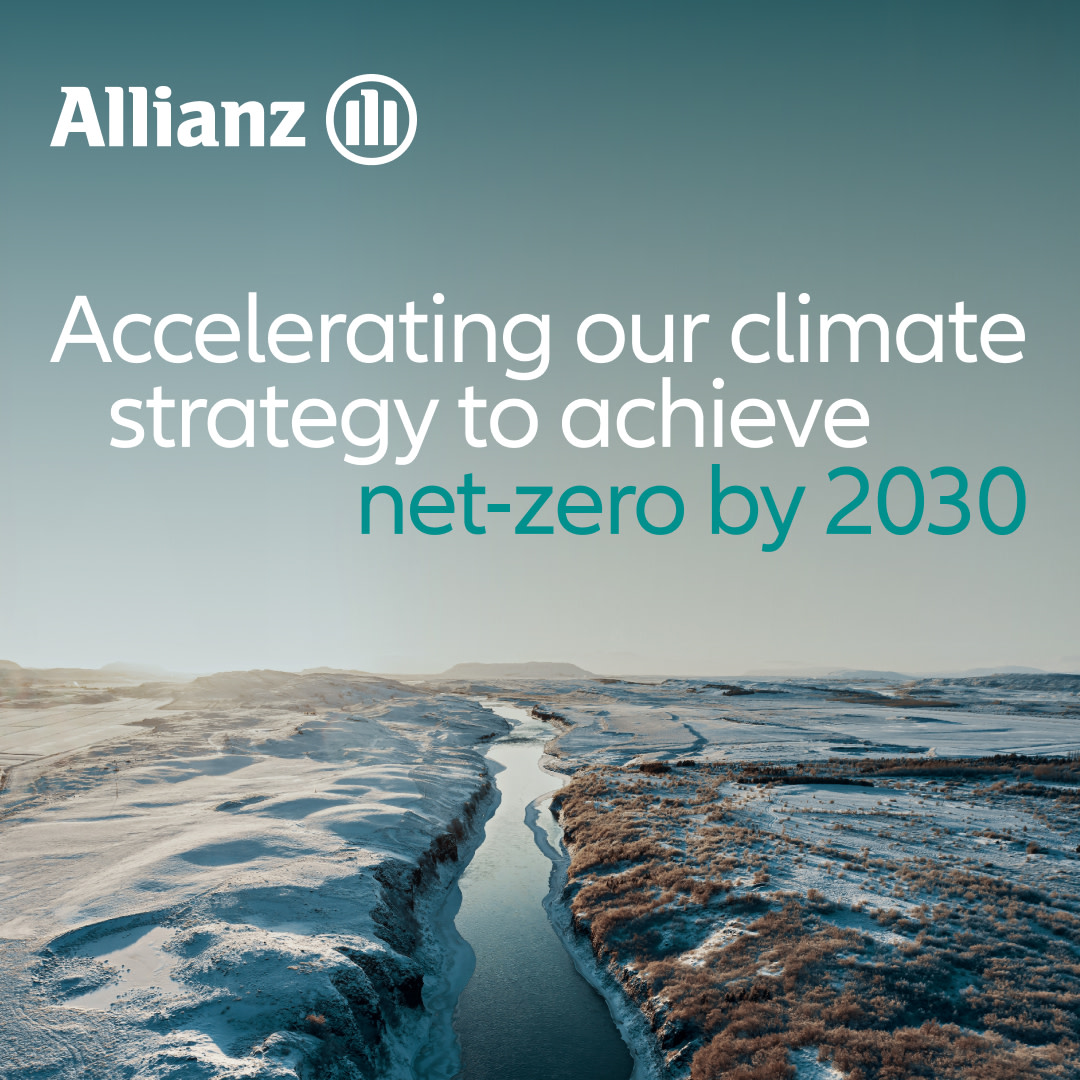Allianz contributes to its definition through the EU Taxonomy framework
Allianz SE

Jörg Ladwein, Regional Chief Investment Officer of Allianz Investment Management (AIM), has collaborated with the European Commission to improve understanding of what constitutes a sustainable investment under the EU Taxonomy framework. In this interview, he discusses the final report on an extended Taxonomy and its importance in Europe's transition to a net-zero carbon future.
Allianz: Jörg, for the past two years, you have been working on a report on an Extended EU Taxonomy with the assistance of other Allianz colleagues. Congratulations, but before you tell us what this report is about and why it is important, could you please explain where it fits into the larger picture?
Jörg Ladwein: Of course. Climate change is approaching a tipping point. Governments must keep their promises under the 2015 Paris Agreement, or the world will be unable to limit the climate disaster to a 1.5-degree Celsius (2.7-degree Fahrenheit) increase in global temperatures.
Forget about 1.5°C. According to a UNEP assessment, the promises countries made at COP26 Glasgow last year to cut emissions by 2030 put the world on track for at least 2.7°C warming, which would result in catastrophic changes to the earth's climate. To have any chance of limiting global warming this century, annual greenhouse gas emissions must be cut in half over the next eight years.
Allianz: I thought the European Union was taking major steps in this area?
Ladwein, Jörg: The European Union has taken bold steps. Beginning in 2018 and continuing over the last few years, it unveiled a comprehensive set of environmental initiatives aimed at establishing the world's first carbon-neutral continent by 2050. The Green Deal, as it is known, addresses everything from state aid rules to a green industrial policy and a carbon border tax on imports.
To have any chance to rein in global warming this century, we need to halve annual greenhouse gas emissions in the next eight years.Jörg LadweinRegional Chief Investment Officer, Allianz Investment Management (AIM)
The initiatives include cutting emissions 50-55% from 1990 levels by 2030. The Green Deal aims to reconcile the European economy with the planet. It envisions a power sector based mainly on renewable sources, the rapid phasing out of coal, decarbonization of gas and a focus on energy efficiency. Within the context of this Green Deal, the EU has also launched a taxonomy, a scheme of classification, for environmentally sustainable economic activities.
Allianz: Which is where you come in. What is the goal of the taxonomy?Jörg Ladwein: The Green Deal demands massive amounts of funding. The investment plan that supports it proposed €1 trillion ($1.2 trillion) of investment across ten years. Of that, roughly half is to come from Europe’s emissions-trading scheme and the EU budget. The rest relies on mobilizing private investment. The taxonomy helps steer capital to relevant projects by giving investors more certainty that what they are investing in is sustainable in the sense that it is in line with EU environmental targets.
The taxonomy aims to provide a standard set of criteria that investors and finance companies can use to screen potential investments. Money managers have teams and tools to measure greenery, but the lack of a shared set of criteria means scorecards are subjective and inconsistent across the industry, which confuses investors. The taxonomy addresses this. It is not a mandatory list of economic activities for investors, still, financial companies can use the taxonomy to design credible green financial products to help finance the transition to a net-zero future. Having a dictionary where we can look up whether an investment can be regarded as green gives everyone the same reference point.
Allianz: And what has been your role?Jörg Ladwein: To ensure industry buy-in into the Taxonomy Regulation and the European Green Deal, the EU is cooperating with a wide range of stakeholders. The Platform on Sustainable Finance is an expert group that brings together experts on sustainability from the corporate and public sector, industry, academia, civil society and the financial industry to develop sustainable finance policies, particularly the EU taxonomy.Together with Julia Backmann from AllianzGI, I worked in subgroup 3. This is where it gets a little complex. Four subgroups prepared various technical aspects relating to the taxonomy.
Our subgroup advised on the development of the taxonomy concerning economic activities that do not have a significant impact on environmental sustainability and on economic activities that significantly harm environmental sustainability.The recommendations were incorporated into the report on an Extended Taxonomy from the EU Platform on Sustainable Finance. That report was released at the end of March. From my perspective, it is noteworthy that the Platform delivered on its complex and demanding mandate in what was, because of COVID-19, a pure virtual meeting format over one-and-a-half years.I am proud to have contributed and would like to thank Julia and all the other colleagues who contributed through excellent support and collaboration
Allianz: That report, was it the controversial one that proposed labelling investments in some gas and nuclear power plants as green investments?Jörg Ladwein: Absolutely not. That suggestion was from the European Commission, but the Platform on Sustainable Finance was involved in so far that we published a response that opposed the proposal. In our opinion, the proposal is a deviation from the science and evidence based principle embedded in the EU Taxonomy regulation. Such principle sought to only use criteria that are based on available scientific evidence. It is rather the result of a political compromise among EU member states.
The European Parliament recently missed the opportunity to reject the European Commission’s proposal. With that the so-called complementary delegated act will come into force on 1 January 2023. While this is regrettable, we must acknowledge political realties in the European Union and its member states.It must also be noted that any gas-fired or nuclear power plants claiming alignment with the EU Taxonomy must first prove they meet a range of detailed criteria included in the delegated act. In addition, there will be transparency on the inclusion of such activities in taxonomy aligned activities as these specific ones have to be disclosed separately by industrial companies and financial institutions investing in them.
Allianz: What does your report deliver? Jörg Ladwein: The report is over 100 pages long, but in summary, it provides a framework for identifying economic activities with different environmental performance levels beyond the “deep green” ambition of the existing Taxonomy framework. It defines economic activities that significantly harm sustainability and activities that do not significantly impact sustainability. It also tackles the EU request for advice on how to consider transition finance, especially for activities to move away from significant harmful levels of performance.The proposed extended taxonomy framework can be seen as a new ‘traffic light system.’
Originally the taxonomy was binary with only green/non-green categories, but the report introduces two new performance categories. Red is for significant negative impact on the environment, and amber indicates intermediate impact, with performances included between substantial contribution and does not significantly harm.Additionally, the report recognizes a new category of activities, those with low or absent impact on the environment. These are typically service industries such as financial services, legal services, travel services, health services and education. Together they represent around 30% of all the economic activities on the markets.
Allianz: What is the benefit of recognizing the new category of activities? Jörg Ladwein: First, it ensures that these activities do not get muddled with non-green activities that are far more impactful in environmental terms. The identification and then voluntary reporting of such low environmental impact activities would allow companies in these industries to have full access to green finance.
Additionally, by identifying them and the activities that are always harmful and need urgent action for exit or decommissioning, a clearer picture can emerge of the remaining industries and activities that will need to be included in the taxonomy in the next few years. The intention behind this and the traffic light approach is to boost finance for the green transition and support companies to unlock necessary funds.
Allianz: So, what’s next? Jörg Ladwein: During the rest of the year, the European Commission will deliberate on how to use the proposals. The Commission can disregard, amend or adapt the report in their consideration of new regulations. It is possible that the Commission supports the proposals for voluntary use of its main elements, but it might shy away to kick-off the complex legislative process that is needed to enact so-called “level 1 “ changes in its regulation during the remaining term of the current Commission.
Allianz: But you must hope that the concept you developed is substantially adopted?Jörg Ladwein: Absolutely, 18 months of arduous work and rigorous public consultation have gone into the report. More than that, it makes sense.
The report extends the taxonomy to cover the whole economy rather than the small proportion of sectors currently considered ‘sustainable.’ In particular, the extended environmental taxonomy would cover the bulk of financial portfolios and become more relevant and valuable for financial institutions.
Allianz: And does that end your involvement?Jörg Ladwein: No, Julia and I have moved since April to subgroup 5, which has the not yet completed task of advising the Commission on important implementation questions of taxonomy and sustainable finance regulation.The current Platform on Sustainable Finance will officially finish at the end of September or latest in October.
The Commission is currently preparing the set-up of a new “platform 2.0” with a new mandate following the completion of the current Platform mandate. It is not yet decided if Allianz or I will be involved. There is a good chance we will because the direct involvement in this group is becoming very valuable for our work at Allianz and for influencing topics that require clarification.
Source: Allianz news






